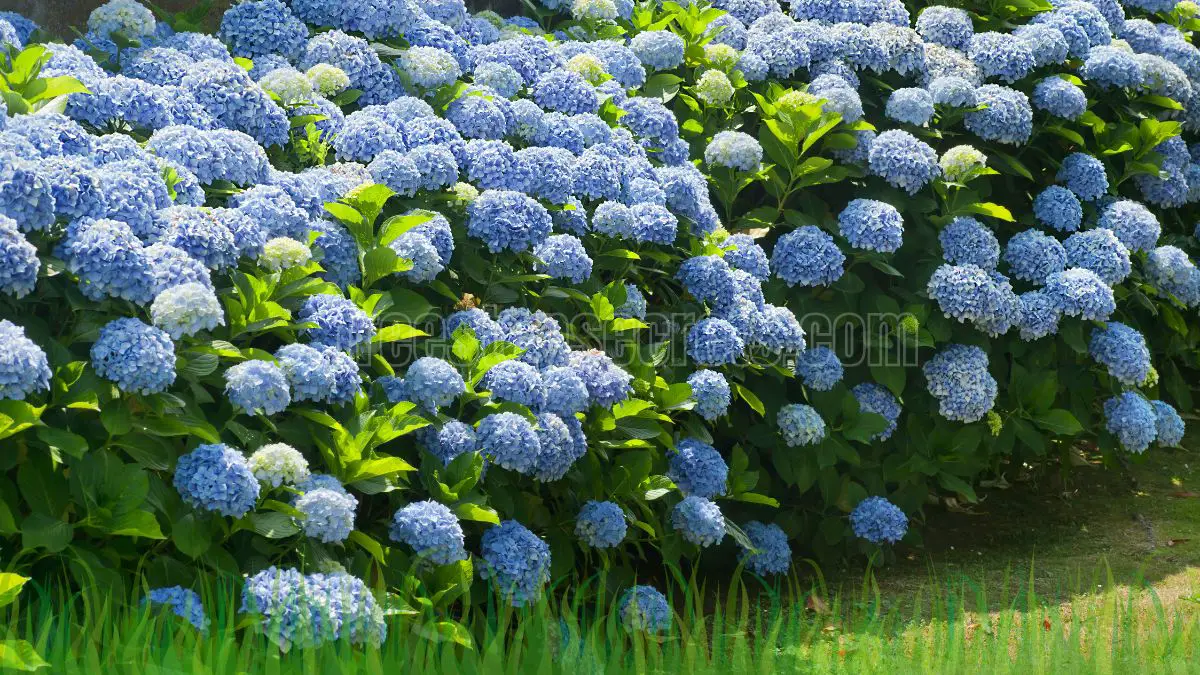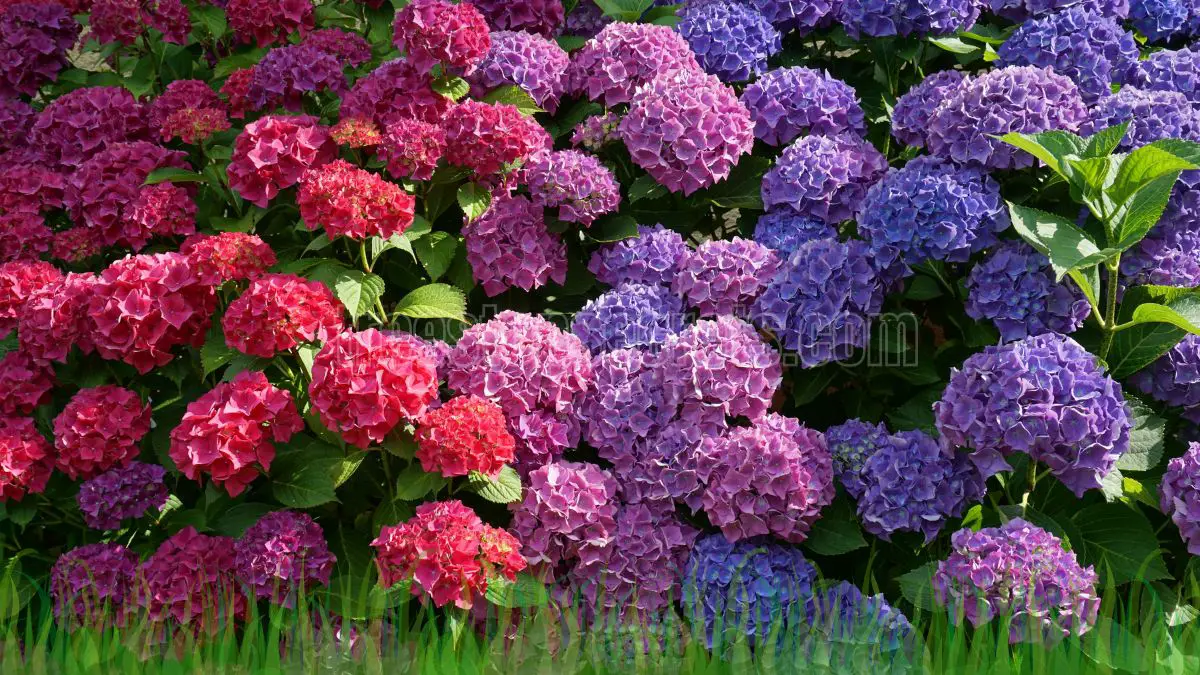Learning when to plant hydrangeas will help ensure that your plants provide lush, colorful blooms and are growing happily. Knowing when to plant is critical to their success and ensuring they can thrive in any climate and condition.
In the United States, early spring and fall are ideal, as the mild weather helps roots establish without stress from extreme temperatures. Selecting these seasons provides the best combination of sunlight and moisture for hydrangeas to thrive, making the timing a key component to success.
Whether you're a seasoned gardener or just getting started, knowing the right planting time is key to enjoying their beauty year after year. Some easy timing decisions can make a world of difference in your garden.
With a little TLC, hydrangeas can thrive and bring beauty for years to come!
Key Takeaways
- Hydrangeas are popular, picturesque, flowering shrubs that add vibrancy and beauty to any garden setting. It’s their versatility that makes them such a favorite for ornamental gardening and landscaping.
- If planting in the fall, plant at least four weeks before the expected first frost. Fall is the perfect time to do this, with cooler temperatures reducing the chance of transplant shock and encouraging the best root growth.
- Right site selection and soil preparation are critical. Pick a spot with even sun exposure and check soil pH to make sure you’re providing the right conditions for hydrangeas.
- When you do plant, ensure that the root ball is at the same height as the surrounding soil. Lightly backfill to remove any air pockets, then water the entire area well to settle the soil.
- Proper care will keep your hydrangeas healthy and full of blooms. This means regular watering, balanced fertilization, and knowledge of how to prune them.
- Watch for soil moisture and judge the situation. This will ensure you don’t make beginner mistakes such as over or underwatering and planting them in a bad location so your hydrangeas thrive.
Understanding Hydrangeas
What Are Hydrangeas?
Hydrangeas, famous for their dazzling, colorful blooms, are prized, leafy, deciduous shrubs that flourish wherever they’re planted—from the Southeast to the Pacific Northwest. They are known for their big bunches of blooms in shades blue, pink, and white.
Thanks to their stunning beauty and versatility, these bushes have earned one of the top spots in ornamental gardening and landscaping.
Types of Hydrangeas
Some of the popular types are bigleaf, oakleaf, and panicle. Bigleaf hydrangeas, to cite just one example, are treasured for their sprawling, wide leaves and show-stopping blooms.
Oakleaf hydrangeas have distinctive, cone-shaped clusters of blooms and deeply lobed foliage, and panicle hydrangeas are known for their long, spiky flower heads. Each species has its own distinct characteristics that lend to them being used for a variety of landscaping purposes.
Growth and Blooming Patterns
Hydrangeas have a natural growth cycle so that they will be dormant in the winter and will bloom in the spring and summer. Environmental factors, such as the soil pH level, can affect their blooming times and flower colors.
Many hydrangeas bloom on new wood, so if this is your plant, pruning is best done in late winter. Understanding these patterns helps in providing effective care, such as planting in fall for root establishment and avoiding stress in the hottest months.
Care with proper pruning and fertilizing at the right times helps them thrive vibrantly.
Optimal Planting Seasons

When it comes to planting hydrangea shrubs, timing truly is everything. The best times for planting hydrangea varieties are autumn, winter, and early spring. Each season offers distinct benefits, particularly regarding temperature and moisture, which significantly influence the success of seed germination and establishment of a healthy root system.
Best Time to Plant Hydrangeas
To give them a good start, plant hydrangeas at least four weeks prior to your first expected frost. This timing allows the roots to get established before the cold arrives. Moving forward, it’s always a good idea to monitor your local weather trends to decide when is the optimal season for planting.
Advance planning is important, making sure the roots have plenty of time to get established before winter.
Planting in Fall
Many people believe that fall is the ideal planting season for hydrangeas. The cooler air temperatures work to combat transplant shock and allow the plants to acclimate. This season gives roots a chance to get established before going dormant for the winter.
In zones 3-5, September is the optimal planting season, since it gives you enough time before frost comes knocking.
Planting in Winter
In milder climates, winter planting is an option when precautions are taken. To ensure healthy hydrangeas, add a layer of mulch to insulate your new plants against any unexpected plunge in temperature. Keeping soil consistently moist is the key to successful hydrangea care.
Planting in Spring
For spring planting, it’s best to plant after the last frost. Soil that is warm and moist encourages quick establishment, although you may need to water in dry weather to ensure even germination.
In northern zones, planting in early spring allows time for plant establishment before the dog days of summer.
Preparing for Planting
Planting hydrangea shrubs successfully begins with some preparation. To start, select a site that accommodates their specific needs. Hydrangeas grow best in locations with sun in the morning and shade in the afternoon. They dislike bad drainage and windy conditions, which can damage their delicate hydrangea flowers.
Take a sun and wind day in your garden to determine the best location for planting. In areas such as USDA zones 3 and 7, timing is crucial. Garden Girls’ McDonald suggests planting during cooler shoulder seasons like early fall. This will give the hydrangea plants time to develop a healthy root system before harsh conditions set in.
Next, improve the soil. If you’re growing hydrangea varieties that prefer slightly acidic conditions, test the pH to ensure it meets their needs. If necessary, consider amending the soil with organic matter such as compost to boost fertility and drainage.
Loosening the soil is important as well, as it allows for strong root structure. In hardiness zones 3-5, planting in September allows you to accomplish 80% of that year’s growth in the first six weeks after planting. At the same time, zone 7 enjoys relatively mild weather, so late March to early April is ideal planting time.
Remember, hydrangeas need about six weeks of mild weather to settle in comfortably, making site prep and soil care essential steps for healthy flowering shrubs.
How to Plant Hydrangeas
Planting hydrangea shrubs correctly can help ensure a foundation for flourishing hydrangea flowers. The ideal time for planting hydrangeas is in the fall or very early spring when conditions are not too hot or cold, and the garden soil is nice and loose! Hydrangeas thrive in areas that receive direct morning sun for 2-3 hours and shade in the afternoon.
1. Selecting Healthy Plants
Begin with disease-free vigorous plants. That’s why it’s so important to buy from trustworthy outlets. Check the underside of the leaves and along the stems for any evidence of insects or distress.
It’s critical to getting healthy plants, which is what you want to grow successfully. Always choose plants with vigorous, well-developed root systems.
2. Digging the Planting Hole
Make the hole as deep as the rootball but two to three times as wide. This gives plenty of room for roots to spread out.
Soil should be loosened at the bottom to ensure good drainage, extremely important for preventing waterlogged roots.
3. Placing the Plant Correctly
Set the root ball at the same height it was in the container. Ensure the plant is securely rooted and growing up straight.
Look for and correct girdling roots before planting so that they don’t cause trouble later on.
4. Backfilling and Watering
Fill the hole back in carefully, without leaving any air pockets around the roots. Water well to settle any air pockets in the soil.
Keep them well watered, an inch of water per week, until frost stops the ground.
5. Adding Mulch for Protection
Add a layer of organic mulch to the base of the hydrangea shrubs. This mulch retains moisture, reduces weeds, and enriches the soil, providing extra insulation for healthy hydrangea plants.
Caring for Newly Planted Hydrangeas
Caring for recently planted hydrangeas is a simple matter of dotting your i’s and crossing your t’s. For one, you’re going to want to make sure your plant is getting adequate water. Set a regular timetable, particularly during dry conditions.
Deep watering when planting is important for establishing roots. Try to water no more than once a week, applying enough water to soak well into the soil. Change with the weather—water more during hot stretches, less if it’s rainy. Don’t water at night, which can lead to mold.
Fertilizing is also an important part of keeping your hydrangeas healthy. Once planted, apply a balanced fertilizer to get them off to a vigorous start and encourage lush blooms. The ideal time is early spring, after the last frost danger has passed, and again in early summer.
Be careful not to over-fertilize, as too much fertilizer will kill tender young plants. A slow-release option every six months does the trick.
Preventative pruning is key to their health and blooms. Do it at the right time of year, which is usually right after flowering. Prune out any dead or damaged wood to maintain a healthy plant.
Proper pruning encourages healthy, vigorous growth and loads of stunning blooms.
Common Mistakes to Avoid
Hydrangeas are among the most rewarding landscape plants, but a few hydrangea mistakes can interfere with their growth and hydrangea blooms. Focusing on hydrangea care and detail can prevent these missteps.
Overwatering or Underwatering
Allowing hydrangeas to dry out, or over-watering will put the plant in stress. Overwatering may cause root rot, and underwatering will result in wilting and subpar flowers.
Hydrangeas require an inch of water per week, more during the hot summer months. Regularly monitoring soil moisture levels is important to avoid extremes. Plus, mulching keeps plants hydrated, meaning you don’t have to water as often.
Incorrect Soil Preparation
Soil prep is the most important thing. Ignoring soil pH or drainage issues can stop growth before it starts.
Hydrangeas prefer rich, well-draining soil with a pH of 5.5 to 6.5. Testing soil and amending it accordingly before planting will set plants up for a healthy start. Prevent competition for nutrients by avoiding planting under very large mature trees.
Poor Location Choice
Picking the right spot can be the most important step. Hydrangeas require morning sun and afternoon shade.
Planting them in deep, all-day shade ensures they won’t bloom. Don’t site them so they’re blasted by the worst, most harmful, midday sun, or planted in the shade of a big old tree. Evaluating site conditions before planting ensures the best possible health.
Proper fall-time pruning and application of high-phosphorus fertilizer in the spring leads to healthy and vigorous growth. Consider what went wrong and change course to ensure you do better in the next go-round.
Conclusion
Planting hydrangeas is one of the best ways to add color and vibrancy to your garden. Plus, you’ll have the opportunity to enjoy their beautiful blooms. This is where timing comes in. For best results, plant in the spring or fall. Just ensure that they have the proper soil, moisture and sun exposure. Don’t make newbie mistakes such as planting too deep or in horrible soil. Photo by Susan Photonography on Unsplash So don’t despair—be hydrangea happy! Follow our advice and you’ll have a breathtaking hydrangea garden. If you’re excited to watch your beautiful garden thrive, what are you waiting for? So grab a shovel, and make those hydrangeas thrive! In return, they’ll reward you with spectacular flowers that will leave you spellbound. So take the plunge into hydrangea gardening—you’ll be amazed at the way your yard dazzles with rich hues and abundant blossoms.
Frequently Asked Questions
When is the best time to plant hydrangeas?
Early spring or fall is generally considered the ideal time for planting hydrangea shrubs. This timing helps ensure that there’s ample opportunity for the roots of hydrangea plants to establish themselves before the summer heat or winter chill sets in, particularly when more stable temperatures are predicted.
Can I plant hydrangeas in summer?
Planting hydrangea shrubs in midsummer can place additional stress on these flowering plants, which do not thrive in extreme heat. If you can’t plant in the cool of the day, ensure your hydrangea plants are well watered.
How much sunlight do hydrangeas need?
Hydrangea shrubs thrive with a little morning sun and afternoon shade, as they prefer filtered sunlight; too much direct sunlight can burn leaves, while too little can hinder hydrangea blooms.
What soil type is best for hydrangeas?
Hydrangea shrubs thrive in fertile, well-drained soil, so it's essential to fertilize and incorporate organic matter like compost. For optimal growth and hydrangea blooms, aim for a pH level between 5.5 and 6.5.
How often should newly planted hydrangeas be watered?
Give your new hydrangea shrubs a deep watering once a week. Water more often if the weather is hot or dry, as consistent moisture is crucial during the first year for building a healthy root system.
What spacing is recommended when planting hydrangeas?
Space your hydrangea shrubs 3 to 10 feet apart, according to type, ensuring adequate air circulation for healthy hydrangea plants and helping to keep disease at bay.
How can I avoid common planting mistakes with hydrangeas?
Don’t plant hydrangea shrubs too deep! When planting in the ground, ensure the top of the root ball is even with the surrounding soil. Both overwatering and underwatering can stress hydrangea plants. Applying about 2-3 inches of mulch helps maintain moist soil and a consistent temperature for healthy hydrangea blooms.
Image Source: Paid image from CANVA



